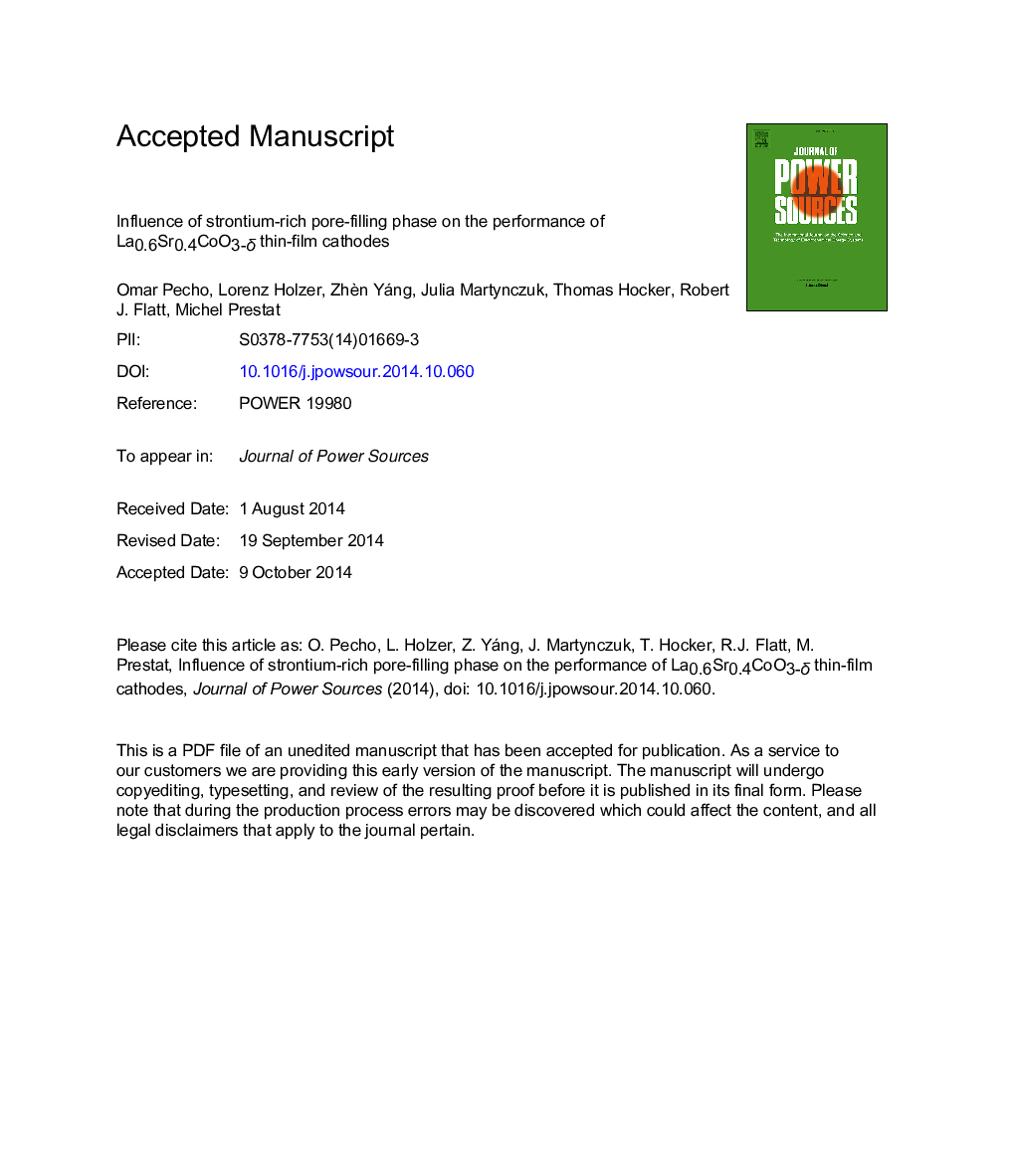| Article ID | Journal | Published Year | Pages | File Type |
|---|---|---|---|---|
| 7734180 | Journal of Power Sources | 2015 | 32 Pages |
Abstract
Nanoporous 1-μm thin La0.6Sr0.4CoO3âδ (LSC) layers are deposited by spray pyrolysis and subsequently sintered at 600 °C, 800 °C, and 1000 °C. A strontium- and oxygen-rich phase can be found within the pore network, which appears at low sintering temperatures. This so-called “secondary phase” occupies up to 20.7 vol.% of the LSC films for the 600 °C annealing process. It does not hinder the electrochemical activity towards oxygen reduction of such layers that exhibit an area-specific resistance (ASR) as low as 0.13 Ω cm2 at 600 °C in air. This result makes the spray pyrolysed LSC thin films promising candidates as intermediate-temperature solid oxide fuel cell cathodes. For higher sintering temperatures the secondary phase progressively disappears. A correlation between the inverse of the ASR and the whole LSC surface area (regardless of the presence of the secondary phase or not) is also evidenced. The increase of ASR with increasing sintering temperature is found to be primarily related to the exchange neutral flux density of the Sr-deficient LSC.
Related Topics
Physical Sciences and Engineering
Chemistry
Electrochemistry
Authors
Omar Pecho, Lorenz Holzer, Zhèn Yáng, Julia Martynczuk, Thomas Hocker, Robert J. Flatt, Michel Prestat,
